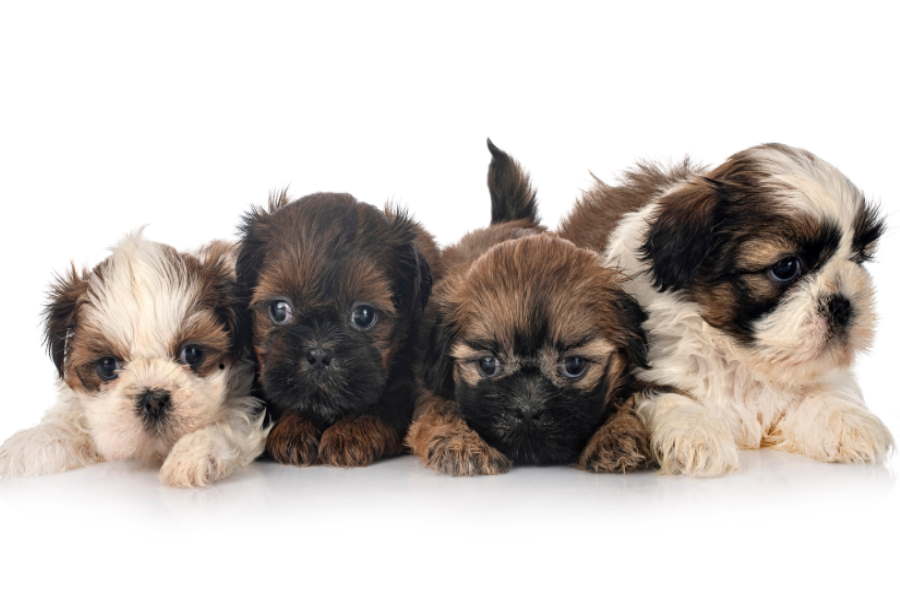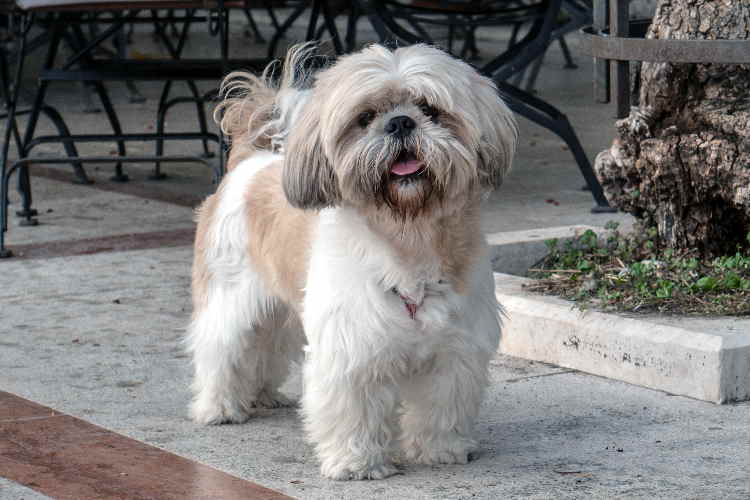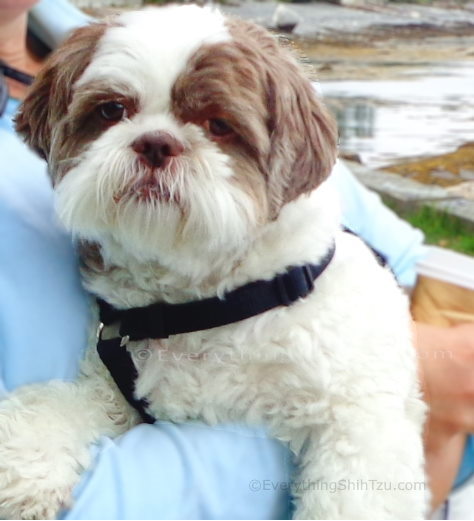- Home
- colors & markings
- puppy colors
Shih Tzu Puppy Colors: Common, Rare and Changes
By Everything Shih Tzu July 31, 2022
This post may contain affiliate links. Read privacy & disclosure policy for info
When it comes to colors, not all Shih Tzu puppies are created equal. Some are just rarer than others.
Depending on their parents and other factors, your Shih Tzu puppy's coloring may be a little different from another dog of the same breed.
There are also colors that tend to appear more often in certain bloodlines or parentage.

A Shih Tzu puppy will generally have a solid-colored coat when born. Then, as they grow older, they'll begin to develop lighter or darker markings on their face and body. Ultimately, a Shih Tzu puppy's colors and markings will become more apparent when they reach adulthood.
Colors can be a big factor in your final decision and knowing what they all mean is the first step to finding the perfect pup for you.
Keep reading to learn more about Shih Tzu puppy colors, including common and rare ones, and how their appearance changes throughout their development.
What Colors Do Shih Tzu Puppies Come In?
Shih Tzu puppies are arguably among the cutest in the world. With a round adorable face and soft fluffy coat, it's hard not to fall in love with these cuties every time you see them.
However, there is more to their charming appearance than meets the eye.
These puppies are well known for their gorgeous coat colors, which can be uncommon and varied and are a big part of what makes them so cute.
Create a mental list of all the dogs you've owned or have been around before and think about what color they've been.
How many colors can you name?
More than likely, every color you've listed is a shade these puppies come in. The Shih Tzu has a reputation for having multi-colored patterns and stripes.
The American Kennel Club has 19 listed colors and variations for the Shih Tzu; out of the 19 confirmed, all but five are considered standard colors for this breed.
Shih Tzu puppies can be found in the following colors:
- Black
- Black and White
- Black, White, and Silver*
- Blue
- Blue and White
- Brindle
- Brindle and White
- Gold
- Gold and White
- Liver
- Liver and White
- Red
- Red and White
- Silver
- Silver and White
- Silver, Gold, and White *
- White*
- Black, Gold, and Silver *
- Black, Gold, and White*
*These are not considered the standard color. However, the breed standard acknowledges that all colors are considered equal within the breed.
More often than not, your puppy will be either a double color or even tri colored.
It is interesting to note that, although solid black and solid white colored Shih Tzu puppies are rare, double-colored black and white puppies are not that uncommon in litters.
Are All White Shih Tzu Puppies Rare?
If you've been around a lot of Shih Tzu's, you've probably seen a ton of different coat color combinations, or maybe you've even seen some cool and unique markings and patterns.
Because of their vibrant batch of colors, many people begin to wonder if any of them are rarer than others, especially white Shih Tzu.
Not all white Shih Tzu are rare.
In fact, it is pretty common for this particular breed to have many white Shih Tzu's, even primarily white ones, but not solid white Shih Tzu's.
A Shih Tzu is still considered white, even if it's just mostly, but not entirely. This is because when it comes to being a rarity, any solid-colored Shih Tzu is very unusual.
Entirely solid white Shih Tzu's are very hard to come by due to the many color combinations with white that are present on their coats and because white is a recessive gene in many dog breeds.
The S Locus, a fancy word to describe the gene in charge of the "white spots" on a dog, controls the white that you see on dogs. It also determines how much of the color is present on the Shih Tzu, otherwise categorized as flash, parti, or piebald.
These three subcategories of the S Locus gene range from a dog having minimal white on its coat to a mostly or full white coat.
Albinism, a rare genetic mutation that results in the lack of pigmentation, is another reason why having a white Shih Tzu is exceptional.
Why Shih Tzu Puppies Change Color?
If you've seen a Shih Tzu change colors, your eyes aren't playing tricks on you.
Shih Tzu can change colors, and it's fairly common that they do so.
A major reason why their coats change colors is due to genetics.
Just as genetics can affect what color they are born with; it can also change what color they become as they develop.
These changes to their coat can happen to small sections of their bodies or larger areas. So, it really just depends on your dog!
There are two genes that are responsible for the change of color in the Shih Tzu's hair. These genes are fading and graying.
The fading gene- also known as the G gene, is what fades the Shih Tzu's coat over time.
The graying gene also called the chinchilla gene, turns the coat a silvery gray color.
So, while there is no guarantee that your Shih Tzu puppy's color will change, there also isn't a guarantee that it won't!
Knowing this, if you're looking to get a Shih Tzu puppy, keep in mind that the color you see now may not be the same a year or two from now.
In other cases, color changes due to infections aren't permanent to your Shih Tzu's coat but may require the intervention of your veterinarian to clear up.
Shih Tzu are particularly susceptible to yeast infections that can cause discoloration that may look like their coat is changing. This discoloration might look like a darkish gray, black, or brown color on the skin.
If your dog has this color on their body, you might want to check on places of the body that have sparser areas of hair like the belly and ears.
What Age Do Shih Tzu Stop Changing Color?
This can be a tricky question. For most Shih Tzu's whose coat fades over time, it will start while they are really young and taper off by the time they reach one year of age.
However, this might not be the case for every pup and might last or start after their first birthday.
Aging also plays a part in the color-changing process.
So, there's always the possibility that your Shih Tzu never changes colors until they reach their senior years, and the grays start to set in.
How Do You Know What Color Your Shih Tzu Will Be?
To be honest, you don't!
Remember when you're looking for a Shih Tzu puppy that, throughout its lifetime, they may change color.
You will most likely see these changes during the first year, so it may be safe to say that by the time they have reached the end of that first year, and they're still the same color, there is a higher chance of them staying that color.
There are many genetic tests available for dogs, so if you're interested in knowing more about your dog's coat, that might be an option to consider.
Final thoughts
Shih Tzu puppy colors are complex and can be a little confusing.
Despite the different hues and shade combinations that they can be born with, some colors like solid black and white are harder to come by with this breed.
Even then, if you do have the chance to own a rare Shih Tzu like this, you may find your pup's hair color changing within the first year or so.
These changes are often caused by genetics that they inherit from their parents or from them simply aging.
While you might have a preference for a specific coat color, don't let your desire for a particular coat stop you from considering Shih Tzu puppies as potential fur babies.
Besides, how many people can claim they have a dog that changes color?
- Home
- colors & markings
- puppy colors



